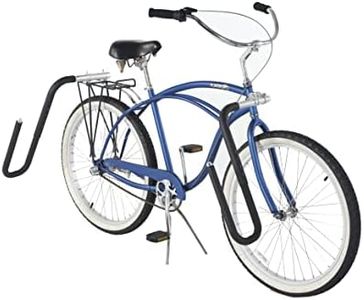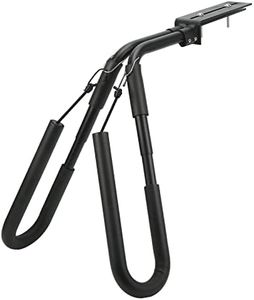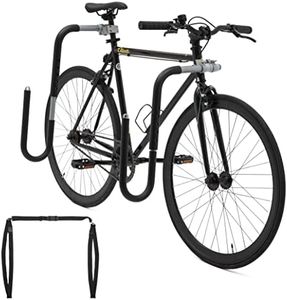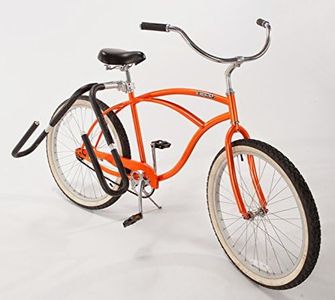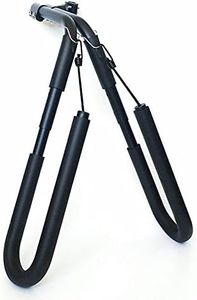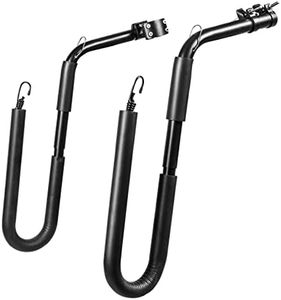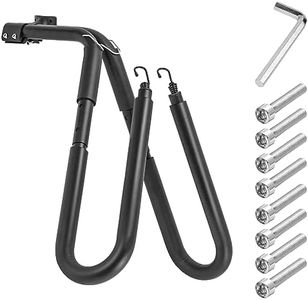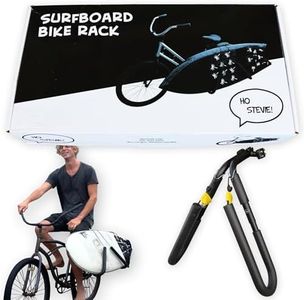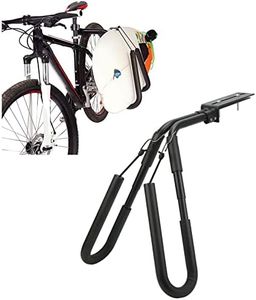We Use CookiesWe use cookies to enhance the security, performance,
functionality and for analytical and promotional activities. By continuing to browse this site you
are agreeing to our privacy policy
10 Best Surfboard Bike Racks
From leading brands and best sellers available on the web.By clicking on a link to a third party's website, log data is shared with that third party.
Buying Guide for the Best Surfboard Bike Racks
Choosing a surfboard bike rack is all about balancing convenience, safety, and compatibility with your bike and surfboard. The main goal is to make transporting your board to the beach as easy and secure as possible, without making your cycling experience awkward or risky. Not every rack suits every bike or board, so it’s important to think about your transportation needs, the type of board you have, and where and how far you usually ride.Mounting StyleMounting style refers to how the rack attaches to your bike. Common styles include seat post-mounted, frame-mounted, or rear rack-mounted options. This is important because it determines how stable and easy the rack is to install. Seat post mounts are quick and often work with many bikes, but may not fit bikes with rear suspension or unusual seat posts. Frame mounts distribute weight well but need space on your bike frame. Rear rack mounts are sturdy and good for heavy boards, but only work if you already have or can fit a rear rack. Consider your bike’s shape and components to choose the style that fits securely and doesn’t interfere with your ride.
Board CompatibilityBoard compatibility means the range of surfboard lengths, widths, and thicknesses the rack can safely carry. This is important because using a rack that doesn’t properly fit your board can be unsafe and may damage your board or affect your bike’s balance. Some racks accommodate just shortboards, while others are adjustable for longboards or even SUPs. Check the manufacturer’s stated dimensions and think about the size of your board—choose a rack that’s designed to hold boards at least as long and wide as yours.
Carrying PositionThe carrying position indicates where your board goes while you ride—either alongside the bike (side-mount) or over the rear wheel (top-mount/rear-mount). Side-mount is the most common for surfboards and keeps your bike’s center of gravity stable, but can make your bike wider. Rear-mount racks keep the bike narrow but may affect handling more. Think about your route: if you ride through tight paths or heavy traffic, side-mount racks may require more care, while rear-mount racks might feel more streamlined but could be less balanced with heavy or long boards.
Ease of Installation and RemovalThis refers to how simple it is to put the rack on your bike and take it off when not in use. Some racks are tool-free and easy to attach or detach, which is handy if you only surf occasionally and want to keep your bike light day-to-day. Others are more permanent and require some tools and time to install, offering a more secure fit if you carry your board frequently. If you value flexibility and don’t want to leave the rack on all the time, look for simple designs with quick-release systems.
Build Quality and MaterialsBuild quality and materials determine how sturdy and weather-resistant the rack will be. Aluminum racks are lightweight and resistant to rust, while steel racks can be a bit heavier but offer strong support. Pay attention to padding or protective coatings where the rack contacts your board—these help prevent dings and scratches. Choose a rack made from durable materials that can withstand exposure to the elements if you ride in all kinds of weather, and check the weight rating to ensure it matches the size of your board.
Security FeaturesSecurity features include things like locking mechanisms to keep your surfboard safe from theft and strong straps or cords to hold the board tightly in place during transit. This is important if you often leave your bike and board unattended, or if you ride over bumpy roads where the board could shift. Look for racks that offer sturdy, weatherproof straps or even built-in locks for added peace of mind, especially if you need to park at the beach or in public places.
